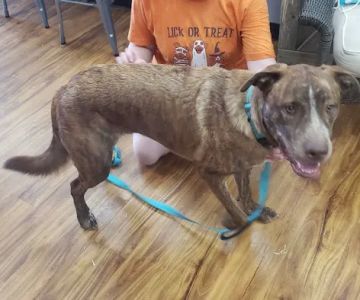- 1-Understanding-Pet-Anxiety-at-Vet
- 2-Preparation-Before-the-Vet-Visit
- 3-Training-Techniques-to-Calm-Your-Pet
- 4-Using-Positive-Reinforcement-Effectively
- 5-Creating-a-Familiar-and-Safe-Environment
- 6-Tips-for-the-Day-of-the-Vet-Visit
- 7-Benefits-of-Calm-Pet-Behavior-at-Vet
- 8-Recommendations-and-Resources
1. Understanding Pet Anxiety at the Vet
Many pets experience anxiety when visiting the vet, triggered by unfamiliar smells, sounds, and handling. Understanding that your pet’s fear is natural helps you approach training with patience. Signs of anxiety may include trembling, whining, excessive panting, or attempts to escape. Recognizing these behaviors early allows you to implement calming strategies effectively.
Knowing the root causes of your pet’s stress is the first step to training them to stay calm at the vet.
2. Preparation Before the Vet Visit
Preparing your pet before a vet visit is critical. This involves gradually exposing your pet to car rides, handling, and the vet clinic environment without stress. Short, positive trips that mimic vet visits can desensitize your pet. It’s also helpful to carry your pet’s favorite treats and toys to associate the vet with positive experiences.
Early preparation helps reduce fear and builds your pet’s comfort level for actual visits.
3. Training Techniques to Calm Your Pet
Training your pet to stay calm at the vet requires consistent practice of specific techniques such as desensitization and counterconditioning. Desensitization involves slowly introducing your pet to vet-like stimuli at a comfortable pace, while counterconditioning replaces fear responses with positive ones. Teaching commands like “sit” and “stay” can provide your pet with focus during stressful moments.
Incorporating these training methods gradually improves your pet’s response to vet visits.
4. Using Positive Reinforcement Effectively
Positive reinforcement is a powerful tool in calming pets at the vet. Reward your pet with treats, praise, or affection for calm behavior. Timing is essential—reward immediately when your pet exhibits relaxation. Avoid punishment, which can increase anxiety. Instead, encourage desired behaviors to build trust and confidence.
Consistent use of positive reinforcement creates a more enjoyable vet experience for your pet.
5. Creating a Familiar and Safe Environment
Bringing familiar items like a blanket or favorite toy to the vet can comfort your pet. Some clinics allow pets to wait in a quieter area to minimize stress. Familiar scents and objects remind your pet of home and safety. Working with a vet experienced in handling anxious animals can also make a significant difference.
Establishing a safe environment supports your pet’s emotional well-being during visits.
6. Tips for the Day of the Vet Visit
On the day of the visit, remain calm and positive, as pets often pick up on owner emotions. Arrive early to avoid crowded waiting rooms. Use a secure carrier or leash, and speak softly to soothe your pet. If your pet has severe anxiety, consult your vet about potential calming aids or medications. A well-planned approach reduces stress for both you and your pet.
Implementing these tips improves the overall vet visit experience and encourages calm behavior.
7. Benefits of Calm Pet Behavior at the Vet
Training your pet to stay calm at the vet benefits both the animal and the veterinary staff. Calm pets receive more thorough exams, less stress-related health risks, and smoother procedures. Owners experience less worry and have more positive interactions with vets. Over time, this reduces the dread of vet visits and promotes routine care adherence.
Calm behavior improves health outcomes and strengthens the pet-owner-vet relationship.
8. Recommendations and Resources
If you want expert advice or products to help train your pet to stay calm at the vet, consider visiting Hidden Brook Veterinary. They offer professional guidance, calming aids, and training resources tailored to reduce pet anxiety. Accessing trusted support enhances your efforts and ensures your pet’s health and comfort during vet visits.
Investing in knowledge and resources leads to confident, stress-free vet experiences for your pet.











